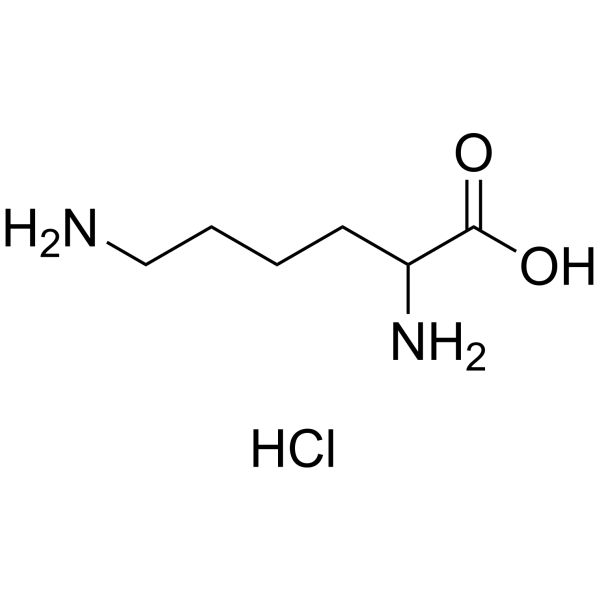DL-Lysine monohydrochloride

DL-Lysine monohydrochloride structure
|
Common Name | DL-Lysine monohydrochloride | ||
|---|---|---|---|---|
| CAS Number | 70-53-1 | Molecular Weight | 182.648 | |
| Density | 1.125 g/cm3 | Boiling Point | 311.5ºC at 760 mmHg | |
| Molecular Formula | C6H15ClN2O2 | Melting Point | 267 °C (dec.)(lit.) | |
| MSDS | Chinese USA | Flash Point | 142.2ºC | |
| Symbol |

GHS07 |
Signal Word | Warning | |
|
Influence of Free Amino Acids, Oligopeptides, and Polypeptides on the Formation of Pyrazines in Maillard Model Systems.
J. Agric. Food Chem. 63 , 5364-72, (2015) Pyrazines are specific Maillard reaction compounds known to contribute to the unique aroma of many products. Most studies concerning the generation of pyrazines in the Maillard reaction have focused on amino acids, while little information is available on the... |
|
|
Preparation of hierarchical mesocrystalline DL-lysine·HCl-poly(acrylic acid) hybrid thin films.
Adv. Mater. 23 , 3548-3552, (2011)
|
|
|
Reinvestigation on the buildup mechanism of alternate multilayers consisting of poly(L-glutamic acid) and poly(L-, D-, and DL-lysines).
Langmuir 24 , 13426-13433, (2008) The buildup mechanism of polypeptide multilayers prepared by the layer-by-layer deposition of a polyanion (poly(L-glutamic acid) (PGA)) and polycations (poly(L-lysine) (PLL), poly(D-lysine) (PDL), and copoly(DL-lysine)(PDLL)) was reinvestigated by using in si... |
|
|
Swelling-shrinking behavior of chemically cross-linked polypeptide gels from poly(α-L-lysine), poly(α-DL-lysine), poly(ɛ-L-lysine) and thermally prepared poly(lysine): effects of pH, temperature and additives in the solution.
Colloids Surf. B Biointerfaces 87 , 299-309, (2011) We synthesized the glutaraldehyde cross-linked hydrogels using four kinds of poly(lysine)s (PLs) and measured the equilibrium swelling ratio (Q) as a function of pH. Also measured was the temperature change of Q at a fixed pH (11.6) in the absence and presenc... |
|
|
Peptides with regular enantiomeric sequences: a wide class of modular self-assembling architectures.
J. Nanosci. Nanotechnol. 7 , 2230-2238, (2007) Organic trans-annular assemblies constitute an expanding class of structures with promising applications for the design of nanotechnological devices. Among the strategies developed for the engineering of organic nanotubes, those characterized by regular alter... |